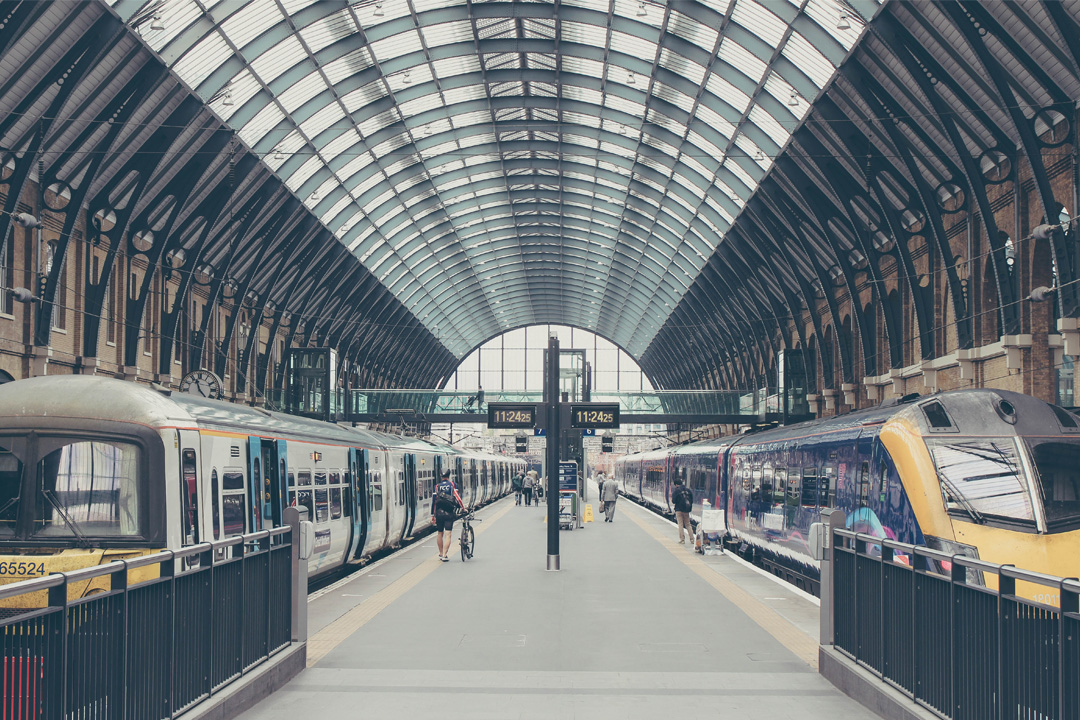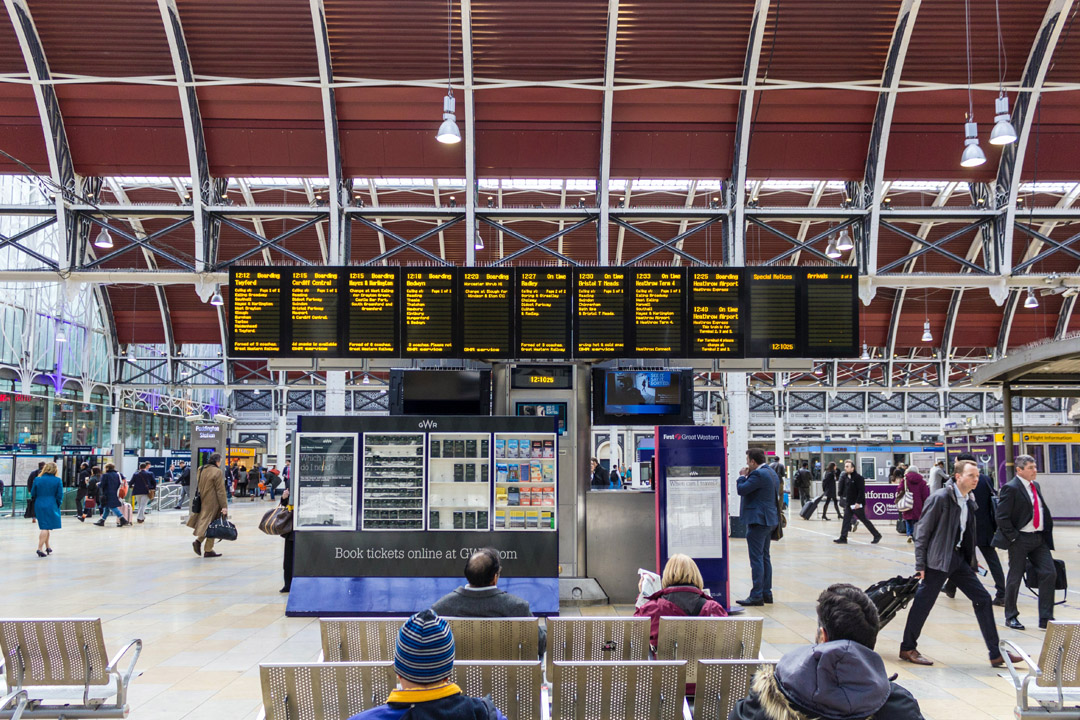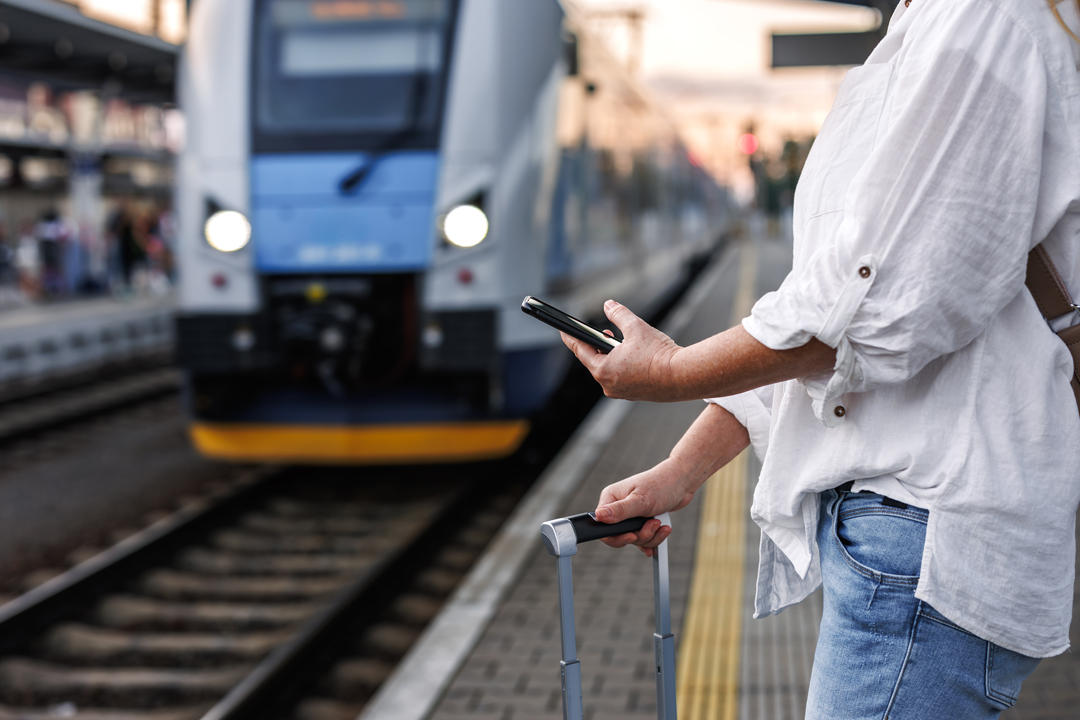Does today’s travel experience meet passengers’ needs?
Are rail passengers being driven away by fragmented, confusing journeys? From multiple touchpoints to inconsistent information and inaccessible design, today’s travel experience can be overwhelming. In this piece, Fran Podmore (Head of Human Factors) and Lisa Baker (Head of Experience Design & Sustainability) explore what an aspirational passenger experience should look like, the key pain points along the current journey, and how adopting a systems-thinking approach can help transport providers design smoother, more inclusive, and more coherent experiences for all travellers, and enhance the experience at their end destination.

Identifying the passenger journey pain points
On a recent journey to Heathrow, Fran experienced first-hand the frustration of a fragmented travel experience. Although the train ticket she purchased covered the entire journey - a train to London Paddington, onto the London underground, and then the Heathrow Express - she couldn’t use an e-ticket because the journey was multi-point and spanned three separate transport systems. The lack of integration between technologies meant she had to collect a paper ticket at the station and use it throughout her trip. This small inconvenience highlights a much larger issue: when systems don’t connect, passengers feel the impact at every stage of their journey, leading to a disjointed rather than seamless experience.
This example touches on a deeper issue with ticketing where the interfacing software of the different companies do not align. That part of the journey should be seamless, yet often the different systems don’t integrate or talk to each other. Looking at it from a human factors or systems perspective it seems counterintuitive not to be considered. Is the challenge too complicated, or is it reluctance to integrate? Regardless of different technologies, as a passenger, you want it to all be joined up. The customer shouldn’t have to see all the suppliers in the chain, they should just be able to get to their destination smoothly.
But the challenges extend far beyond ticketing and digital integration. When we examine the full spectrum of passenger experience, the gaps become even more apparent. Core performance issues like system reliability, punctuality, and safety form the foundation, yet even when trains run on time, passengers may struggle with cognitive overload from unclear wayfinding, inconsistent information across platforms, or unnecessarily complex booking processes. The physical experience matters too, whether that’s uncomfortable seating, inadequate accessibility features, poor climate control, and lack of facilities can transform an on-time journey into an unpleasant one. Meanwhile, the sensory environment - from excessive noise or harsh lighting directly impacts passenger wellbeing, yet these factors often receive little attention.
The service quality can also vary dramatically depending on who is the provider for the different parts of the same trip. Issues like wi-fi quality, inconvenient connections between different transport modes, and lack of real-time updates. There are technology and digital ecosystem gaps and resource and infrastructure misalignments. The fragmented parts lead to a poor overall experience for passengers, who perceive the journey as a single entity rather than a series of disconnected services. There are customer experience (CX) teams who are involved for each of those destinations and connections, but they can’t resolve cross-organisational issues, causing these pain points. This means there is no ownership of the journey, it is fragmented with dips in services.
And what happens when something goes wrong? For example, critical accessibility information is missing or conflicting information between organisational websites. Organisational silos are preventing coordinated service delivery, and ultimately setting up the potential for further errors and passenger frustrations.

What should we aspire to and how can we get there?
If we were to envision an aspirational 'north star' for passenger experience to guide the industry forward - what would that look like, and how can transport systems work toward achieving this vision?
At its core, it would be seamless, intuitive and entirely passenger focused. It would remove friction at each touchpoint in the journey - firstly, one ticket that carries you through your entire journey, clear and consistent wayfinding, real-time updates across each mode of transport, and small conveniences such as continuous wi-fi and the ability to pre-order a coffee on board. Information would be integrated and accessible, from digital displays to mobile apps, ensuring passengers do not feel frustrated and anxious.
Achieving this requires looking at the experience through a human-centred lens, mapping the journey at each stage, identifying key touchpoints and where the dips in the experience are, from the ticket purchase through to the arrival at the destination. This aspirational standard should anticipate different passenger needs, share information at the right time, accommodate diverse requirements and make the journey for the passenger feel effortless and reliable.

So what are the system solutions?
Establishing passenger experience (PX) partnerships with shared key performance indicators (KPIs) across organisations can aid in creating seamless journeys and journey orchestration across the whole sphere. This serves so many benefits for each company's own revenue too - with passengers likely to continue their full journey on their services, rather than resorting to external transport means such as taxis, especially for those with access requirements. Within this, well designed technology and digital services are crucial to avoid system gaps. The partnerships should work together to look at the connections between journey points, and how that feeds through digitally passenger, also taking into account different accessibility requirements.
When it comes to ticketing, we should be considering the sustainability of printing paper tickets, advocating for digital options, but maintaining analogue systems for those who need them, providing that choice, rather than mandating. Equally the way ticketing systems interface should extend beyond the ticket booking. Consistency between zone markings on digital screens and on platforms at stations also help to create that seamless experience when physically at the station. Beyond ticketing, transport operators need to address the full usability spectrum. This means designing for physical comfort and accessibility, anticipating different body types, accessibility requirements, and providing features like bike and luggage space. The sensory experience requires equal attention: managing acoustics to reduce noise pollution, optimising lighting for different times of day and visual needs, maintaining comfortable temperatures and air quality, and even considering how taste (via onboard catering) contributes to journey satisfaction.
Systems thinking and integrated planning needs to be adopted and become the norm across transport operations. We need TOCs to be thinking about the whole passenger journey, not just their segment of it - understanding why the customer is travelling and where they are trying to get to. This requires proper task analysis, that is, understanding the human activity being supported, not just the transport operation being delivered. We all travel for different reasons, for work, for leisure, to visit family and friends. If someone is using public transport to get to a museum for example, the experience could fall short due to the travel and journey getting there. The user is seeing their whole journey to and from, with the destination in the middle, as part of that experience, not separate. The travel element as part of that journey needs to be seamless, contributing to, not detracting from. It’s about creating a holistic eco-system where every touchpoint, from ticketing to signage to connections, works together to support the passenger’s day out.
As part of the system's solutions, companies should be honest about issues they are working on and are in the pipeline - communication is vital and allows customers to plan in advance, and to keep them informed during their journey. From a human factors perspective, uncertainty creates higher cognitive load than known problems - transparency enables passengers to form accurate mental models and make better decisions. From the moment they book their ticket, information can be shared with the passenger and at different stages of their journeys, supported by the use of AI. Providing information such as up to date and reliable accessibility information and detailed journey instructions, for example, using Citymapper for platform details is crucial for helping passengers plan ahead. Where efforts are ongoing to improve services, this should be shared with passengers, or communicated with nearby destinations so clear pre-visit information can be provided. In addition, travel companies can look to partner with destinations to provide this information, and to encourage the use of public transport. For example, Forestry England have also collaborated with bus companies to offer discounted entry for train or bus travel for some of their sites including Westonbirt Arboretum, to encourage greener travel. Access guides are one way that destinations can also provide clear up to date information about accessible public transport routes.
The root issue
The problem is not the failure of individual organisations, but a system that lacks intentional design and coordination, one where each system optimises only for its own success. A customer-first mindset, supported by systems that reward collaborative outcomes rather than isolated achievements, is essential. Modern travel is multi-point, with diverse intentions and requirements and the industry must adopt a human factors approach and address journey maps through thoughtful experience design to truly work toward this aspirational vision and deliver a passenger first experience. This means considering not just whether trains arrive on time, but whether the entire experience - cognitive, physical, sensory, and emotional - supports passengers' needs. Only by adopting this holistic, systems-level perspective can the transport industry move from fragmented service delivery to truly integrated, passenger-centred experiences.
Written by:

Francesca Podmore
Head of Human Factors
Fran is an experienced human factors engineer with a portfolio of projects across rail, aviation, energy and government sectors. She has led a number of major projects including our work on the command centre for the ITER fusion reactor. She brings experience across a range of human factors methods including UX design, risk assessment and user trials organisation.

Lisa Baker
Head of Experience Design & Sustainability
Lisa is a Chartered Human Factors Specialist with 18 years of experience across various industries, including healthcare, transport, culture and heritage. Lisa specialises in bridging human factors and service design to create innovative and sustainable customer services and experiences, grounded in evidence.